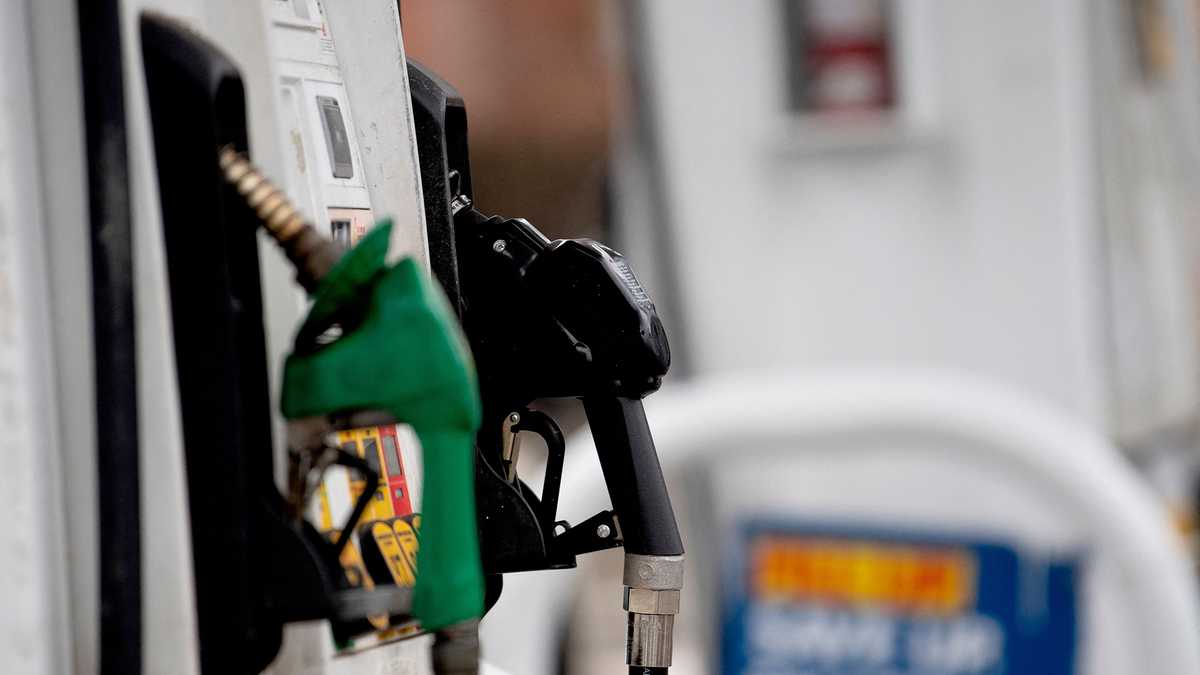Americans are spending less on gas this Memorial Day weekend compared with last year, and prices are expected to dip lower throughout the summer.As of Sunday morning, the national average for regular, unleaded gas was $3.18 per gallon, while the average was $3.60 per gallon a year ago, according to AAA.The White House has sought to seize on the good news as evidence that President Donald Trump’s energy policies are paying off.“This is down from Memorial Day last year and, adjusted for inflation, it’s the second cheapest price per gallon of gas on Memorial Day since 2003, thanks to President Trump,” Karoline Leavitt, the White House press secretary, said during a press briefing ahead of the holiday weekend.Leavitt was citing an analysis from GasBuddy that was published Tuesday. It also forecast an average price of $3.02 per gallon through Labor Day, with a sub-$3 per gallon national average possible on some days, especially toward the latter half of the summer.Patrick De Haan, GasBuddy’s head of petroleum analysis, said this year’s relatively low gas prices are being influenced by lower crude oil costs amid an increase in production from OPEC, a group of oil-exporting developing nations that coordinates on petroleum policies.”It could be a potential that OPEC has raised production to continue those warming relations with President Trump, but his policies are not having any impact,” said De Haan.The White House has specifically pointed to Trump’s Day 1 executive order that declared a national energy emergency and laid out several steps to “unleash American energy.” The order was celebrated by industry groups like the American Petroleum Institute. De Haan points out that the U.S. had already been drilling at record levels when Trump took office and, despite his executive order, U.S. oil production estimates have fallen slightly since December 2024. “There’s a potential that, in the years ahead, policy could eventually lead to more oil production, but, for now, the low oil prices are actually leading to lower U.S. oil production,” De Haan said.De Haan said the drop in oil prices partly stems from economic uncertainty due to Trump’s sweeping tariffs.”The concern, certainly from April, that tariffs could slow down the U.S. economy, which would, in turn, slow down oil consumption,” De Haan said.The Trump administration’s response to global conflicts could also potentially influence prices at the pump. Russia’s invasion of Ukraine in 2022 caused major supply disruptions that drove up gas prices. Trump is currently pushing for a U.S.-mediated peace deal to end the conflict, but that has proved challenging. The Trump administration is also negotiating a possible nuclear deal with Iran after Trump unilaterally withdrew from an Obama-era agreement during his first term. “If Iran sees a nuclear deal that includes easing sanctions, that could also put downward pressure on oil prices because Iran could essentially start selling its oil on the global market after years of being heavily sanctioned,” De Haan said.
Americans are spending less on gas this Memorial Day weekend compared with last year, and prices are expected to dip lower throughout the summer.
As of Sunday morning, the national average for regular, unleaded gas was $3.18 per gallon, while the average was $3.60 per gallon a year ago, according to AAA.
The White House has sought to seize on the good news as evidence that President Donald Trump’s energy policies are paying off.
“This is down from Memorial Day last year and, adjusted for inflation, it’s the second cheapest price per gallon of gas on Memorial Day since 2003, thanks to President Trump,” Karoline Leavitt, the White House press secretary, said during a press briefing ahead of the holiday weekend.
Leavitt was citing an analysis from GasBuddy that was published Tuesday. It also forecast an average price of $3.02 per gallon through Labor Day, with a sub-$3 per gallon national average possible on some days, especially toward the latter half of the summer.
Patrick De Haan, GasBuddy’s head of petroleum analysis, said this year’s relatively low gas prices are being influenced by lower crude oil costs amid an increase in production from OPEC, a group of oil-exporting developing nations that coordinates on petroleum policies.
“It could be a potential that OPEC has raised production to continue those warming relations with President Trump, but his policies are not having any impact,” said De Haan.
The White House has specifically pointed to Trump’s Day 1 executive order that declared a national energy emergency and laid out several steps to “unleash American energy.” The order was celebrated by industry groups like the American Petroleum Institute.
De Haan points out that the U.S. had already been drilling at record levels when Trump took office and, despite his executive order, U.S. oil production estimates have fallen slightly since December 2024.
“There’s a potential that, in the years ahead, policy could eventually lead to more oil production, but, for now, the low oil prices are actually leading to lower U.S. oil production,” De Haan said.
De Haan said the drop in oil prices partly stems from economic uncertainty due to Trump’s sweeping tariffs.
“The concern, certainly from April, that tariffs could slow down the U.S. economy, which would, in turn, slow down oil consumption,” De Haan said.
The Trump administration’s response to global conflicts could also potentially influence prices at the pump.
Russia’s invasion of Ukraine in 2022 caused major supply disruptions that drove up gas prices. Trump is currently pushing for a U.S.-mediated peace deal to end the conflict, but that has proved challenging.
The Trump administration is also negotiating a possible nuclear deal with Iran after Trump unilaterally withdrew from an Obama-era agreement during his first term.
“If Iran sees a nuclear deal that includes easing sanctions, that could also put downward pressure on oil prices because Iran could essentially start selling its oil on the global market after years of being heavily sanctioned,” De Haan said.
